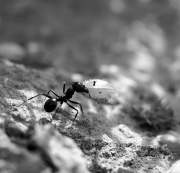Here’s a taste of what I’ve been writing on Beacon so far. It’s been enormously fun so far, and the focus is a bit different from what I post on here. I’ve got lots of other great story ideas coming up for Beacon; I’m looking forward to researching them and sharing what I find with my subscribers. For now, here are a few excerpts from my first few stories to entice those of you who might be on the fence:
Fit for a Queen
In this short creative nonfiction piece, a young queen sets off into the dangerous world alone. Burdened with her people’s future, she has to persevere in the hope that help will arrive in time.
The young queen had to find shelter soon. Everything depended on that. Stumbling, she scrambled over the rough ground as she looked for a place to hide — a crevice or even just a protective overhang. She spotted a fissure in the rocks ahead and made for it, a crack just wide enough for her to squeeze through. Safe at last, she slowed down, conserving her energy for the task ahead. Continue reading…
Through Alien Eyes
Mantis shrimp, famous for their lightning-quick punch, also have the most advanced eyes we know about and a fundamentally different approach to vision. Get a glimpse of how they see the world.
If we were designed in God’s image, it’s hard to imagine what model inspired the mantis shrimp, but it must have been pretty impressive. Heavily armoured and formidably armed, these marine crustaceans kill their prey — molluscs, crustaceans, and small fish — with a strike that accelerates as fast as a .22 calibre bullet. They look out at the world with a pair of eyes mounted on stalks which they can move independently, tracking an object with one eye while scanning their surroundings with the other. One researcher described the effect as “most uncrustacean-like, suggesting an almost ‘primate-like’ awareness of their surroundings.” Continue reading…
A Grander View
In a world that’s brimming over with life, we often think of ourselves as somehow special. Join me on a journey of exploration through the lives and evolution of the other creatures on Earth. Along the way, we’ll discover that the living world is infused with a richness of marvels, of which we are just a small part.
It all started with agriculture. Or maybe fire. Or was it the first time we used language? The truth is that I don’t know when it started and I won’t pretend to, but at some point we invented the conceit of human exceptionalism and that myth has grown ever since. It’s infiltrated our language and permeates our thoughts, shaping how we see the world. Seduced by our ingenuity, we imagine ourselves as apart from the rest of the world, elevated above it or at least dominant within it. Continue reading…

 Darwin’s finches
Darwin’s finches

You must be logged in to post a comment.